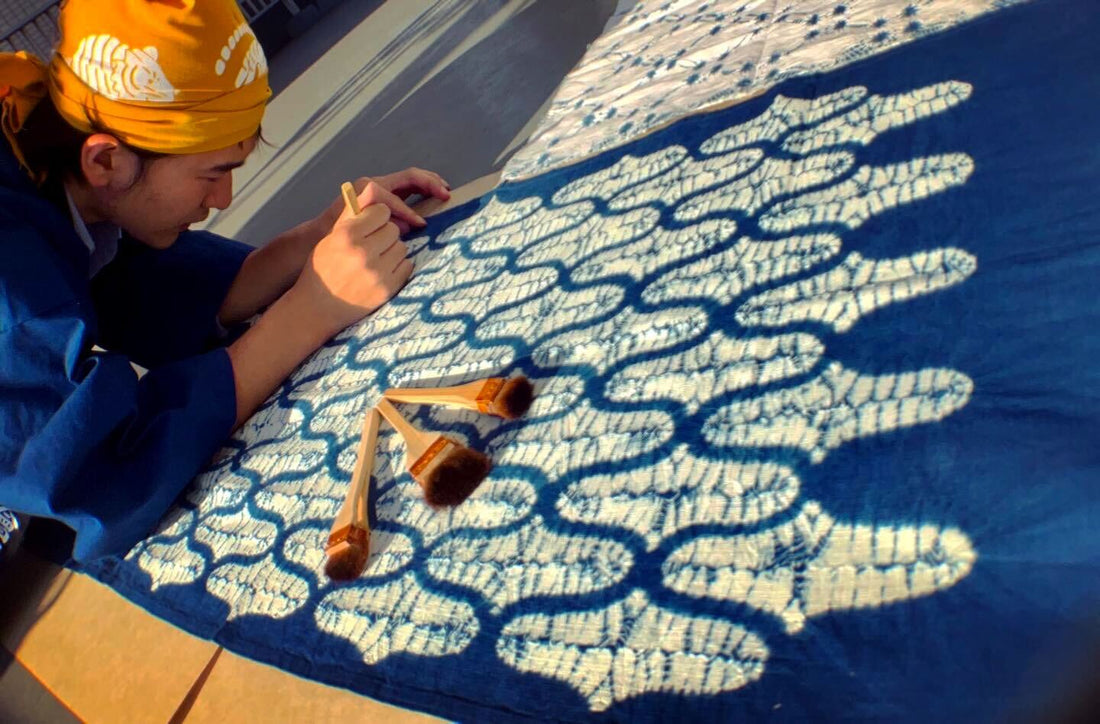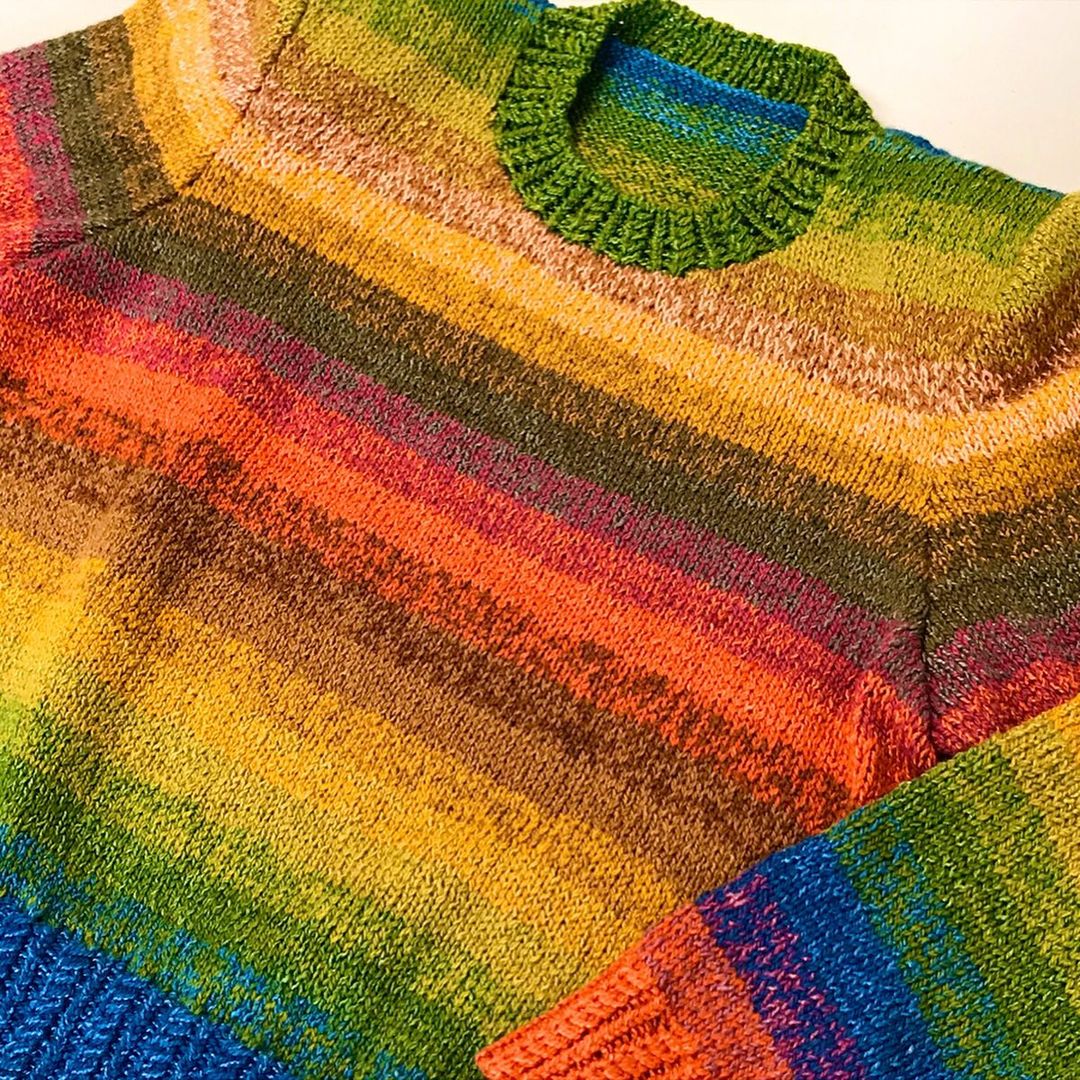Hello, we have been dealing with indigo for 200 years.
My name is Yuta of Asakusa's Aikuma Dyestuff.
Don't you think it is strange?
Indigo leaves are green. But how is it possible to produce indigo dye from this green leaf? Today, I would like to explain the mechanism.
There are two ways of dyeing with indigo: from the raw leaves (生葉染め:Nama-ba dyeing) and by reducing the indigo in an alkaline solution (藍染め:Normal indigo dyeing). Here, we introduce the mechanism of the current mainstream indigo-dyeing method!
There are various types of indigo, such as Japanese Tade indigo and Indian indigo from India, but these structures and the mechanism of dyeing are the same.
Introduction
Indigo contains "indican," a substance that is the raw material for the indigo color, in the leaves of the plant.
"Indican" is present in the leaf tissue but is colorless. So, this "indican" is somehow transformed into indigo, the indigo-colored substance.
Indigo color
Many of you may have heard of "Indigo".
As the name implies, "indigo" is the ingredient that gives the color indigo.
Indican, which is contained in the tissue of indigo botanicals, undergoes the following process to become indigo.
When "indican" is broken (crushed or crumbled), enzymes remove the sugars from the "indican" to form a substance called "indoxyl". (Indican is a glycoside of indoxyl with glucose.)
"Indigo" is formed when this "indoxyl" is oxidized by contact with air and combined with another "indoxyl."
It is still too early to be convinced that this is how we indigo-dye although this is mechanism of indigo-dye from the raw leaves (生葉染め:Nama-ba dyeing).
This is because the "indoxyl" can be adsorbed by proteinaceous fibers (silk, wool, etc.), which are ionic fibers but its adsorption on plant fibers composed of cellulose (cotton or linen) is weak.
So, how we do normal indigo dyeing and dye the cotton or linen cloth? The problem is that "indigo" is not soluble in water.
In that case, it seems impossible to color the cotton cloth by soaking it in an indigo liquid as in indigo dyeing. Why are we able to dye with indigo?
The key lies in oxidation and reduction.
Oxidation and reduction in indigo dyeing
In indigo dyeing, a substance called "indican" is oxidized to another substance called indigo, which is the indigo pigment.
However, indigo is insoluble in water.
What should we do?
Well, when indigo is reduced (called leuco compound), it becomes a slightly yellowish substance called leucoindigo. The reduction is the reverse chemical reaction of oxidation.
When dyeing with indigo, we often add a reducing agent (such as AZ Special or hydrosulfite).
When you add a reducing agent to indigo liquid, this "leucoindigo" is made.
Then, "Leucoindigo" is soluble in alkaline water (e.g. sodium hydroxide solution).
This means...
If we follow the "indoxyl" → "indigo" process that appeared earlier with "indigo" → "leucoindigo", we can liquefy the indigo component and attach it to the fiber.
Oh, but isn't "leucoindigo" yellowish...
That's right. But don't worry, let's let it oxidize, the reverse reaction of reduction.
"Leucoindigo" will return to its original state and become indigo "Indigo.
When indigo dyeing, the cloth that was initially yellowish green is gradually dyed blue as it comes into contact with the air. This is because the yellowish "leucoindigo" is converted back to indigo "indigo" during the oxidation reaction.
Summary
Indican→indoxyl→indigo→leucoindigo→indigo
The indigo color is made from a colorless substance in green plants through a complex process of "indigo."
It is very mysterious, isn't it? Indigo dyeing is possible through such a large number of reactions.
Why don't you all try indigo dyeing and experience this excitement...
Here is a simple indigo dyeing kit!
④P.S.
In ②, we introduced AZ Special and Hydrosulfite as reducing agents, but there is no way that such chemicals were used in indigo dyeing before the Industrial Revolution.
In the past, indigo dyeing was reduced by "fermentation", not by chemicals. Please refer to this page for the specific method of indigo dyeing.
[Reference]
Aizome from a Chemical Perspective, Satoshi Ushida




1 commentaire
To whom it may concern, I have great interest in the traditional way of dyeing with indigo. I am about to order your Japanese indigo, because the color is so beautiful.
Could you send me the specific method of dyeing with indigo through fermentation?
Thank you for your advice, Anna Frenzel